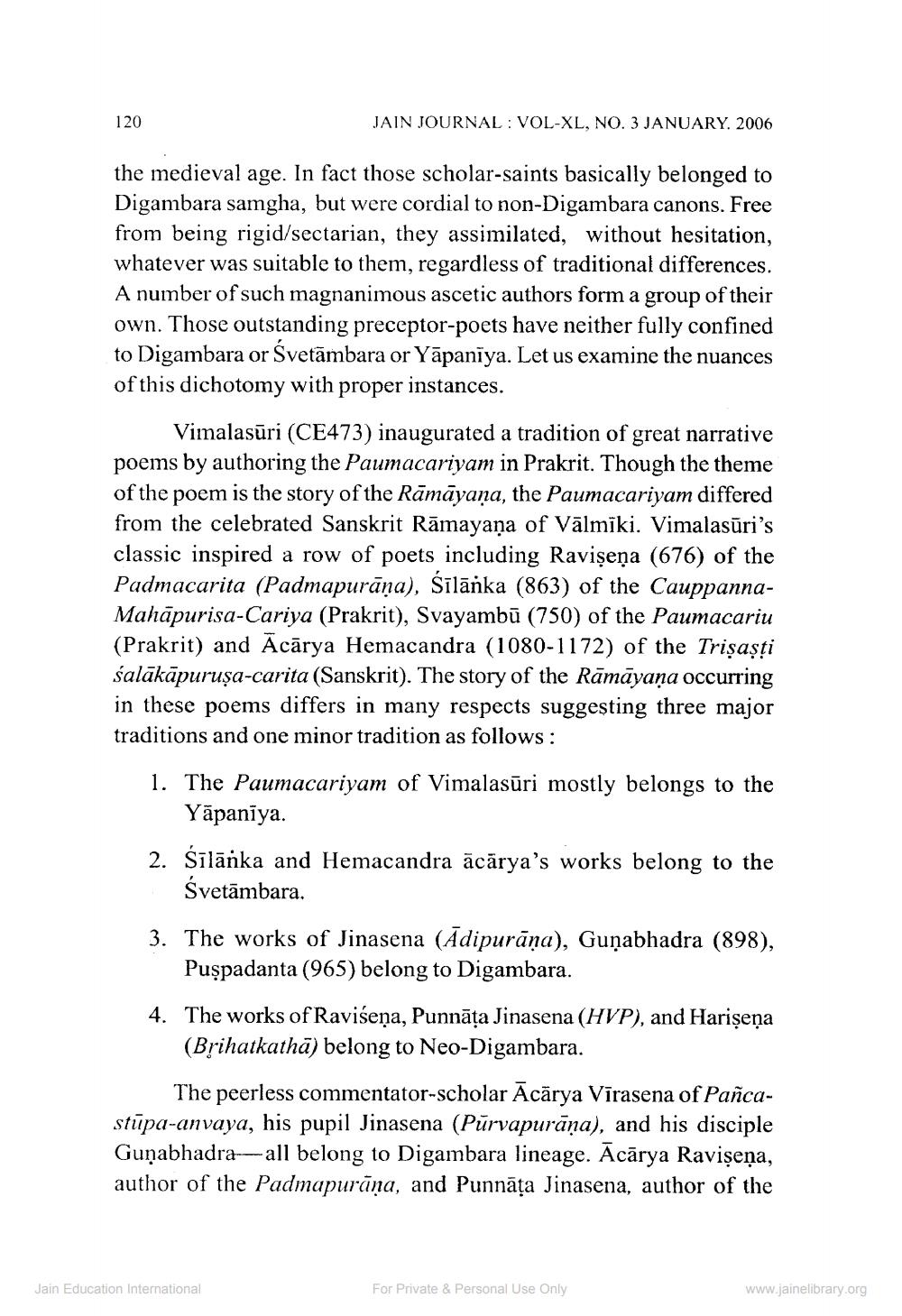________________
120
JAIN JOURNAL VOL-XL, NO. 3 JANUARY. 2006
the medieval age. In fact those scholar-saints basically belonged to Digambara samgha, but were cordial to non-Digambara canons. Free from being rigid/sectarian, they assimilated, without hesitation, whatever was suitable to them, regardless of traditional differences. A number of such magnanimous ascetic authors form a group of their own. Those outstanding preceptor-poets have neither fully confined to Digambara or Svetambara or Yapaniya. Let us examine the nuances of this dichotomy with proper instances.
Vimalasuri (CE473) inaugurated a tradition of great narrative poems by authoring the Paumacariyam in Prakrit. Though the theme of the poem is the story of the Rāmāyaṇa, the Paumacariyam differed from the celebrated Sanskrit Rāmayaṇa of Vālmīki. Vimalasūri's classic inspired a row of poets including Ravisena (676) of the Padmacarita (Padmapurāṇa), Śīlānka (863) of the CauppannaMahapurisa-Cariya (Prakrit), Svayambu (750) of the Paumacariu (Prakrit) and Acarya Hemacandra (1080-1172) of the Trişaşti salākāpuruṣa-carita (Sanskrit). The story of the Rāmāyaṇa occurring in these poems differs in many respects suggesting three major traditions and one minor tradition as follows:
1. The Paumacariyam of Vimalasūri mostly belongs to the Yapaniya.
2. Sīlānka and Hemacandra ācārya's works belong to the Śvetambara.
3. The works of Jinasena (Adipurāṇa), Guṇabhadra (898), Puspadanta (965) belong to Digambara.
4. The works of Raviśeņa, Punnāța Jinasena (HVP), and Hariṣeņa (Brihatkatha) belong to Neo-Digambara.
The peerless commentator-scholar Acārya Vīrasena of Pañcastupa-anvaya, his pupil Jinasena (Pūrvapurāṇa), and his disciple Gunabhadra-all belong to Digambara lineage. Acārya Raviṣeṇa, author of the Padmapurana, and Punnața Jinasena, author of the
Jain Education International
For Private & Personal Use Only
www.jainelibrary.org




